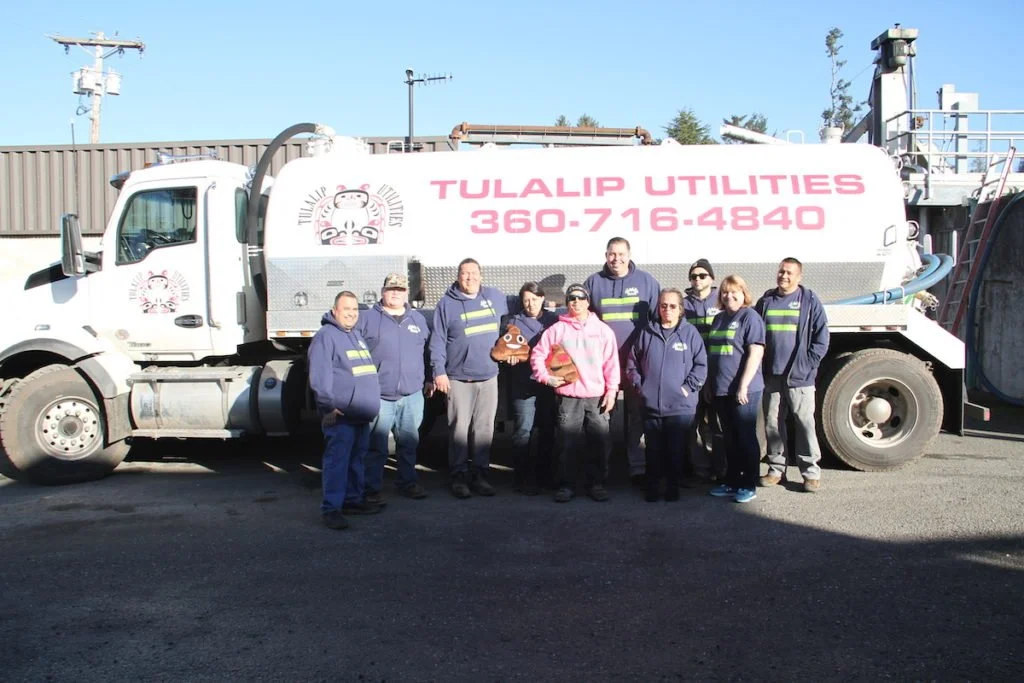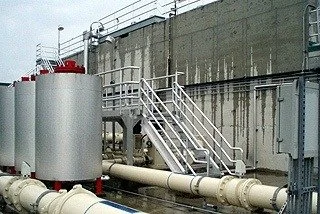Tulalip Utilities provides water and water treatment for 1,800 residences on the reservation, plus a plethora of businesses that lie within it: Walmart, Cabela’s, Home Depot, McDonald’s, a mall, several banks, and three casino-hotels. Here is an aerial view of Tulalip Utilities Wastewater Plant, Mission Bay. (Courtesy Christopher Wright, Tulalip Data Services)
Even before “mni wiconi” became the watchword for the importance of water for life, Indian Country was awash in water issues. While the rate of Native homes without access to safe water supply and/or waste disposal facilities dropped from 12 percent in 2007 to 6.5 percent in 2016 (compared to 1 percent of non-Tribal homes), an amalgam of issues, stemming from climate change and big ports and industry along the coasts, now threaten to reverse this progress.
Worse, “some Tribes have not yet secured their water rights,” lamented Karletta Chief, Associate Professor & Extension Specialist, Arizona State University. This is due to very costly litigation and lack of funding to implement infrastructure.
Not so for the Tulalip Tribes in Washington state who “are making moves for clean and safe drinking water for the reservation for the next 100 years,” according to Mike Leslie, Tulalip Utilities Authority Manager, Water and Wastewater.
Until 2014, Tulalip used only ground water for all uses within its boundaries. But in 2014, it finally negotiated its water rights — and a contract — with the City of Everett, gaining the right to 32 million gallons of clean water per day from Everett from 2016-2066.

Yes, you read that correctly. But they can’t possibly use, or distribute, it all — not yet, anyway. Daily usage, and Tulalip infrastructure and operational capacity, is between 800-900,000 gallons of water.
Currently, the Tribe owns and operates all infrastructure from Everett’s boundary to the reservation, and monitors the quality of water delivered from Everett. Tulalip also has had a groundwater system operation for 50 years. The Tribe uses it to supply the “back side” of the reservation, where infrastructure does not yet reach. The Tribe also treats all the groundwater and conducts all operations and maintenance in accordance with Environmental Protection Agency (EPA) regulations under its Tribal water quality assurance plan.
More significantly, according to Leslie, “Leadership was very committed to improving and expanding infrastructure.” It could see the potential for prime retail on their Tribal retail right off of Interstate 5, and the Tulalip Tribes planned accordingly. This included planning what to do with the excess 31 million gallons they had rights to.

Leadership was also committed to ensuring safe coastal waters on which it is economically and spiritually dependent. And they were determined to treat the water as a blessing rather than a commodity.
Though a recent United Nations letter highlighted the fact that water is being managed as a profit generator by private industry, Tulalip aims to provide affordable, continuous, and ample clean water to its members and reservation businesses.
So, what happens to that other 31 million gallons of water per day that Tulalip has right to? They sell it to surrounding jurisdictions and businesses outside of the reservation. Right now, they are operating a bit in the red, but forthcoming new infrastructure will change that, providing a new — and novel — source of revenue for the Tribe, Leslie told Native Business in March 2019.
This article originally appeared in the March 2019 “Infrastructure” print edition of Native Business Magazine.







